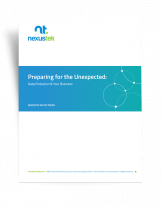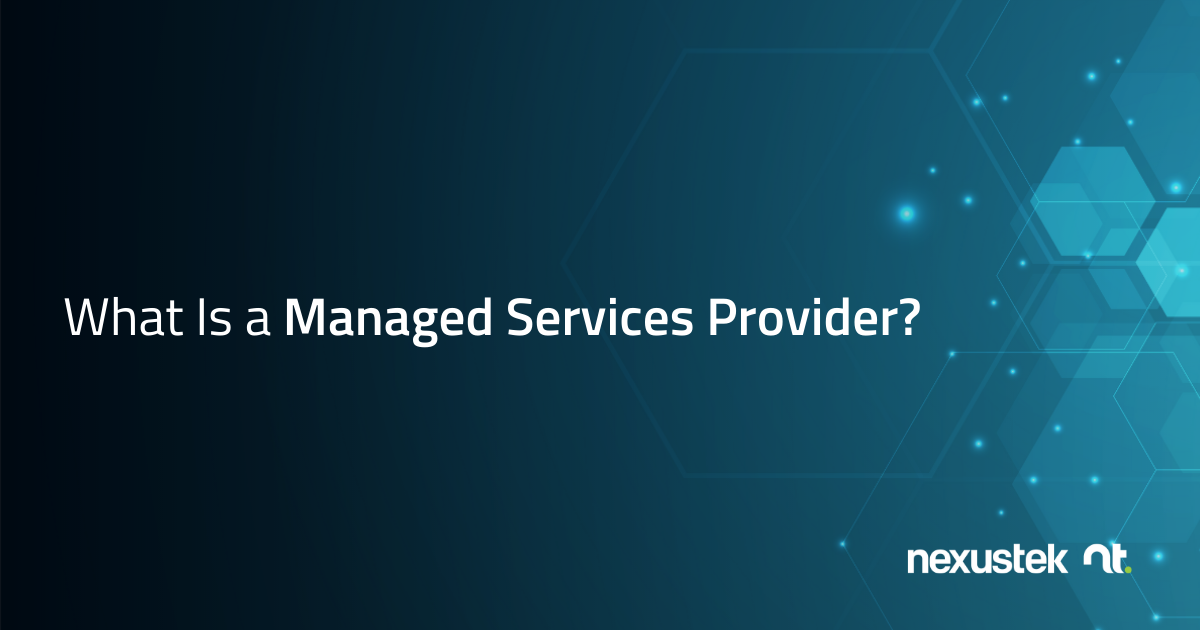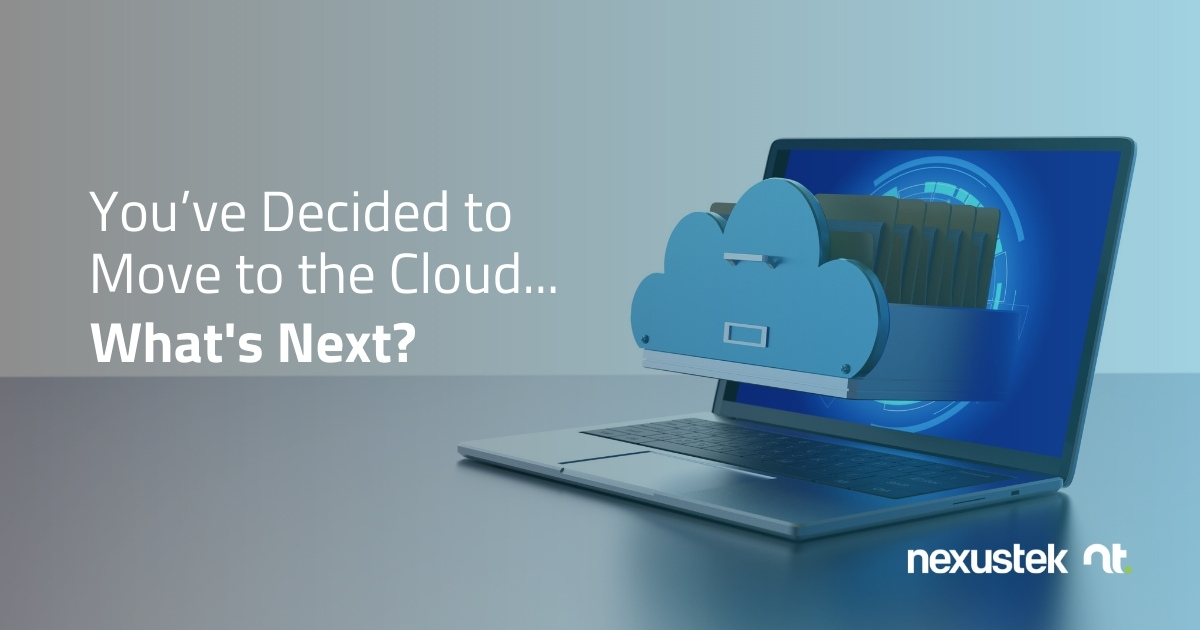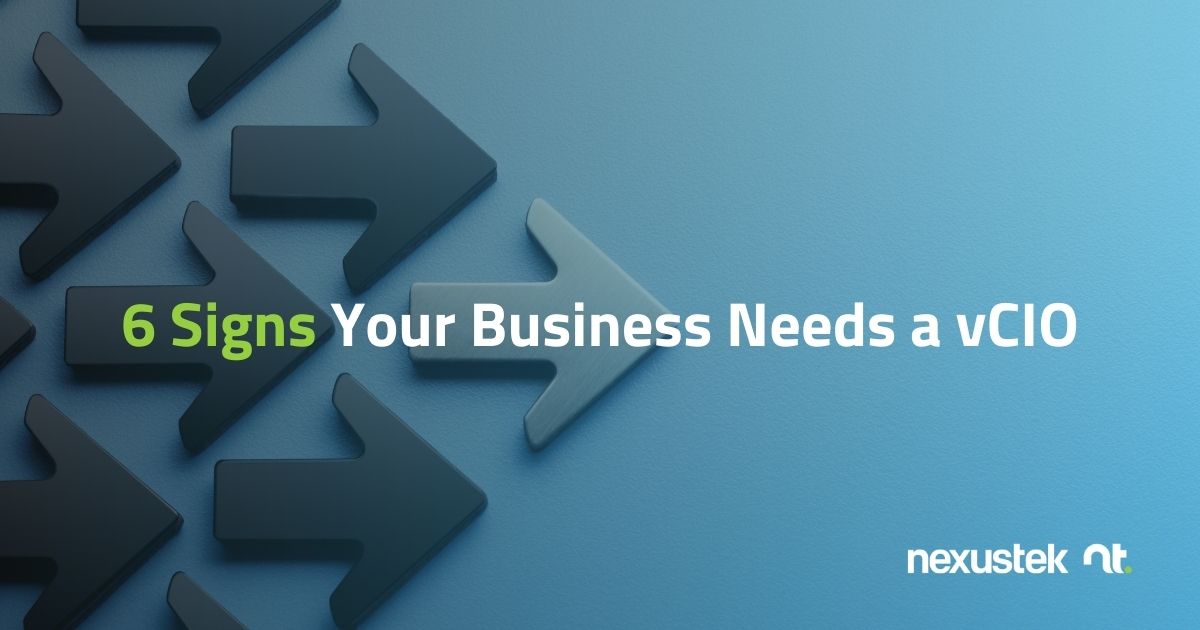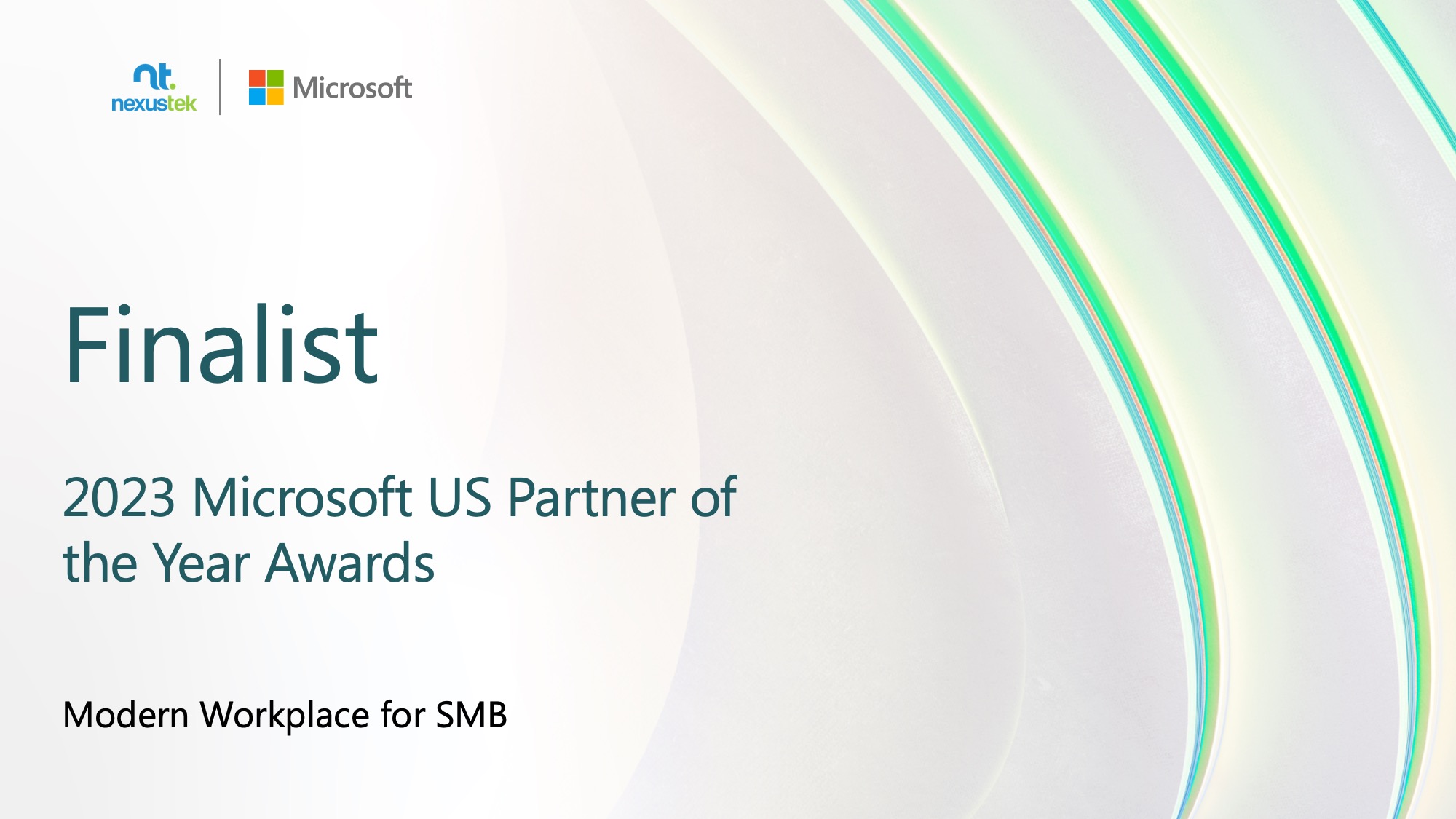
NexusTek Honored as a Finalist for Microsoft US Partner of the Year Award
Managed IT services provider recognized as a finalist in the 2023 MSUS Partner Award in Modern Workplace for SMB
Denver, CO, June 28, 2023 — NexusTek today announced it has been named a finalist of the 2023 Microsoft US Partner of the Year Award in the category of Modern Workplace for SMB. The company was honored among a field of top Microsoft partners for demonstrating excellence in innovation and implementation of customer solutions based on Microsoft technology.
“NexusTek is honored to be included as a finalist for Microsoft’s Partner of the Year Award,” said Bill Wosilius, CEO of NexusTek. “We find it particularly gratifying to be recognized in the category of Modern Workplace for SMB, as we are passionate about supporting growing businesses to make the transformation to modern infrastructure that allows them to increase their efficiency, explore new strategies for attaining their unique business goals, and ultimately expand their market reach.”
“We strive to make it easy for businesses to harness the power of Microsoft’s top-tier solutions, and we relish the opportunity to then watch as our customers accelerate to new heights, as did the customer showcased in our submission. It is exciting to watch our customers’ businesses thrive as the result of our consultation and support, and equally thrilling to be recognized by Microsoft as one of their highest performing partners,” he concluded.
The Microsoft US Partner of the Year Awards recognize Microsoft partners that have developed and delivered outstanding Microsoft-based applications, services, and devices during the past year. Awards were classified in various categories, with honorees chosen from a set of more than 800 was recognized for providing outstanding solutions and services in Modern Workplace for SMB.
Finalists of the Modern Workplace for SMB Award are recognized by Microsoft as partners that have seen substantial and sustainable growth in helping customers in the small (<25 seats) and midmarket space (25+ seats) to transform their workplaces. Finalists for this award are those who have created innovative service offerings while engaging directly with customers to deliver business value by leveraging any of the following technologies: Microsoft Teams Essentials, Microsoft Defender for Business, Windows 365, and/or Microsoft 365 Business Premium.
“We would like to extend our congratulations to the winners and finalists of the 2023 Microsoft Partner of the Year Awards!” said Nina Harding, Corporate Vice President, Microsoft US Global Partner Solutions. “The winners and finalists of the 2023 Microsoft Partner of the Year Awards have demonstrated the best of what’s possible with the Microsoft Cloud by providing innovative new solutions and services that positively impact customers and enable digital transformation.”
The Microsoft Partner of the Year Awards are announced annually prior to the company’s global partner conference, Microsoft Inspire, which will take place on July 18-19 this year. Additional details on the 2023 awards are available on the US Partner Community Blog here: US Partner Community Blog.
About NexusTek
Trusted by thousands of small and medium-sized businesses (SMBs), NexusTek is a national managed IT services provider with a comprehensive portfolio comprised of end-user services, cloud, infrastructure, cybersecurity, and IT consulting. We design holistic solutions for customers that deliver a superior end-user experience, backed by a 24/7/365 domestically staffed support team. NexusTek Managed Service Plans offer end-to-end IT management with fixed-monthly, per-user pricing through which SMBs can leverage help desk, backup, disaster recovery, dedicated engineers, security, 24×7 remote support, and network monitoring services while creating predictable IT budgets.

